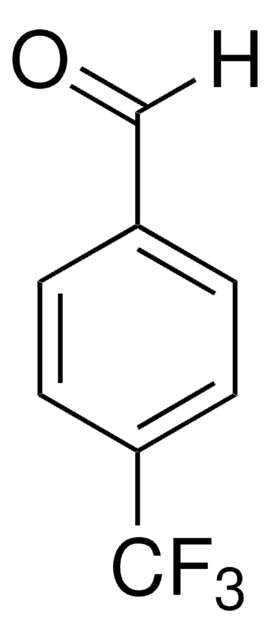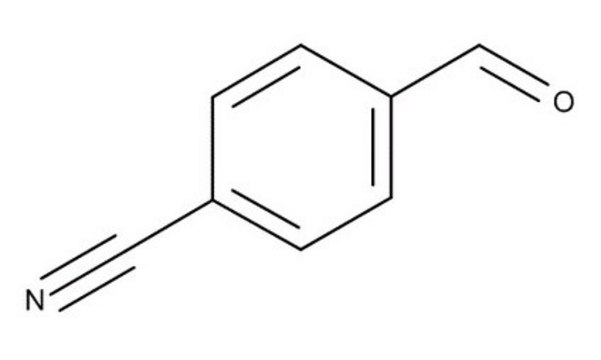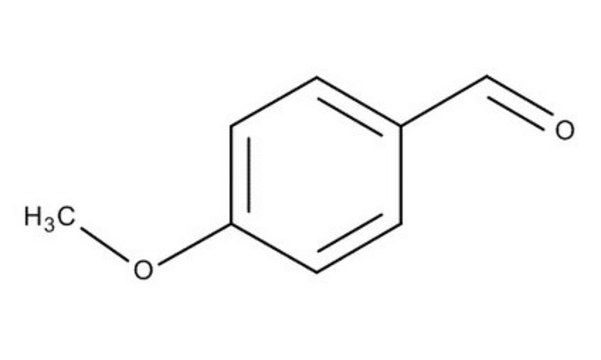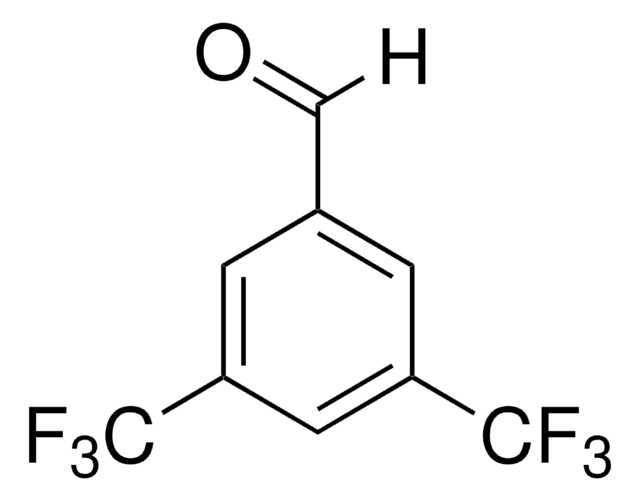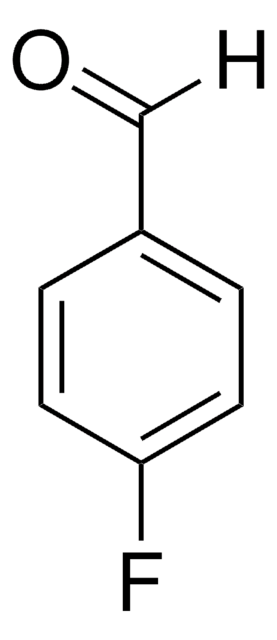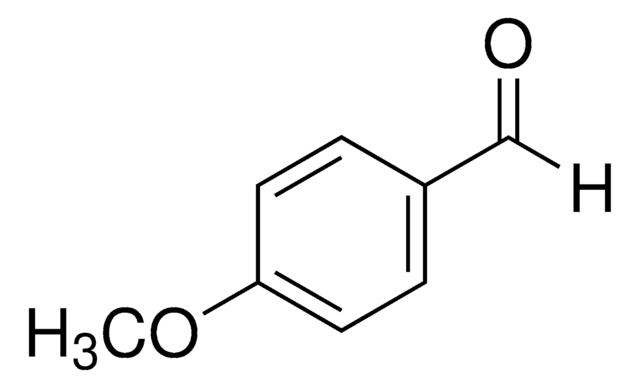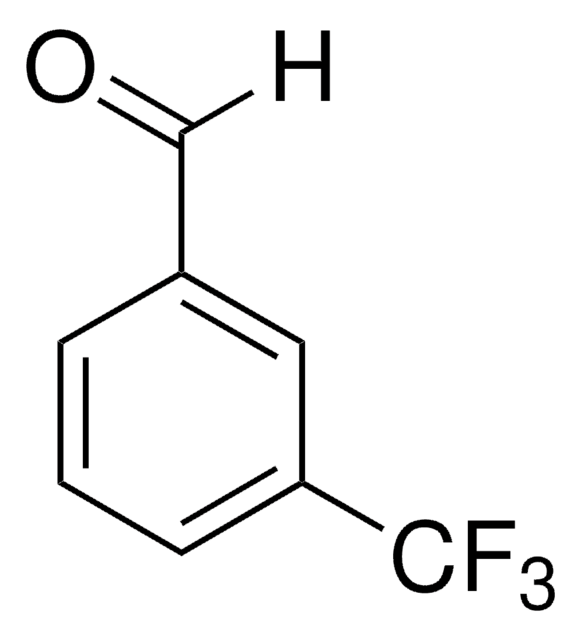146250
3-Formylbenzonitrile
98%
Synonym(s):
3-Cyanobenzaldehyde
Sign Into View Organizational & Contract Pricing
All Photos(1)
About This Item
Linear Formula:
NCC6H4CHO
CAS Number:
Molecular Weight:
131.13
Beilstein:
2205751
EC Number:
MDL number:
UNSPSC Code:
12352100
PubChem Substance ID:
NACRES:
NA.22
Recommended Products
Quality Level
Assay
98%
form
powder
bp
210 °C (lit.)
mp
75-78 °C (lit.)
functional group
aldehyde
nitrile
SMILES string
[H]C(=O)c1cccc(c1)C#N
InChI
1S/C8H5NO/c9-5-7-2-1-3-8(4-7)6-10/h1-4,6H
InChI key
HGZJJKZPPMFIBU-UHFFFAOYSA-N
Looking for similar products? Visit Product Comparison Guide
Application
3-Formylbenzonitrile was used in the synthesis of 3-(6,6-dimethyl-5,6-dihydro-4H-benzo[7,8]chromeno[6,5-d]oxazol-2-yl)benzonitrile.
Signal Word
Warning
Hazard Statements
Precautionary Statements
Hazard Classifications
Eye Irrit. 2 - Skin Irrit. 2 - STOT SE 3
Target Organs
Respiratory system
Storage Class Code
11 - Combustible Solids
WGK
WGK 3
Flash Point(F)
Not applicable
Flash Point(C)
Not applicable
Personal Protective Equipment
dust mask type N95 (US), Eyeshields, Gloves
Choose from one of the most recent versions:
Already Own This Product?
Find documentation for the products that you have recently purchased in the Document Library.
Hong Zhao et al.
Chemistry (Weinheim an der Bergstrasse, Germany), 10(10), 2386-2390 (2004-05-18)
The molten reaction of 2-naphthol, 4-(aminomethyl)pyridine, and 4-pyridinecarboxaldehyde at about 180 degrees C yields trans-2,3-dihydro-2,3-di(4'-pyridyl)benzo[e]indole (1) which possesses two chiral centers, rather than an expected Betti-type reaction product with only one chiral carbon center. The same reactions, using 3-pyridinecarboxaldehyde, 4-cyanobenzaldehyde
Kelly C G Moura et al.
Bioorganic & medicinal chemistry, 20(21), 6482-6488 (2012-09-25)
Twenty-three naphthoimidazoles and six naphthoxazoles were synthesised and evaluated against susceptible and rifampicin- and isoniazid-resistant strains of Mycobacterium tuberculosis. Among all the compounds evaluated, fourteen presented MIC values in the range of 0.78 to 6.25 μg/mL against susceptible and resistant
Our team of scientists has experience in all areas of research including Life Science, Material Science, Chemical Synthesis, Chromatography, Analytical and many others.
Contact Technical Service
